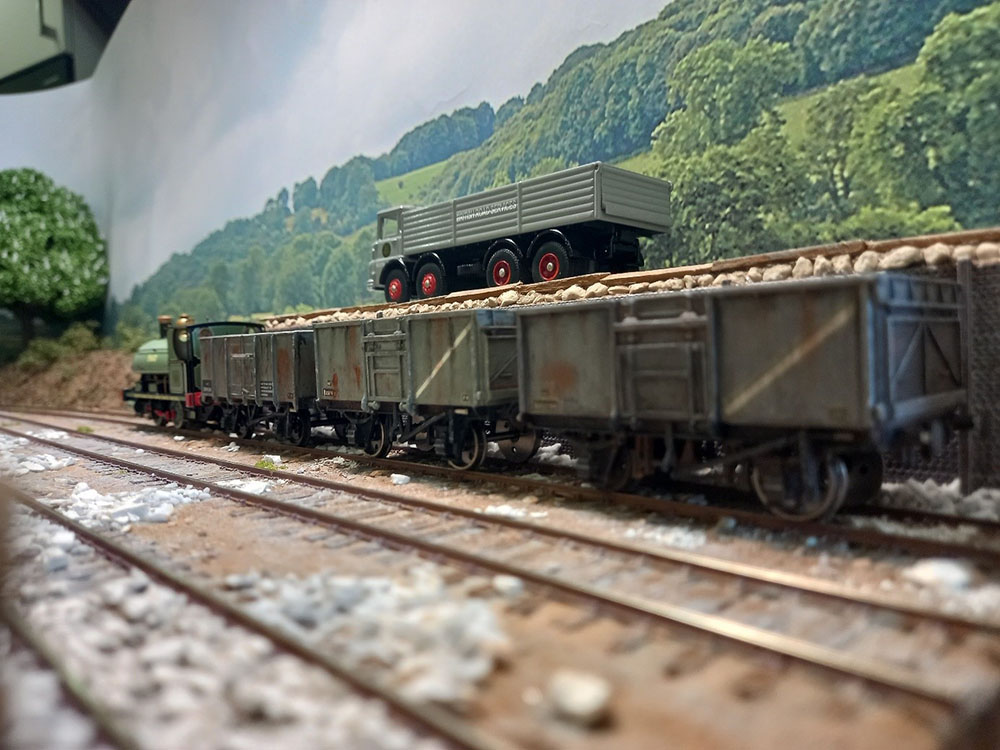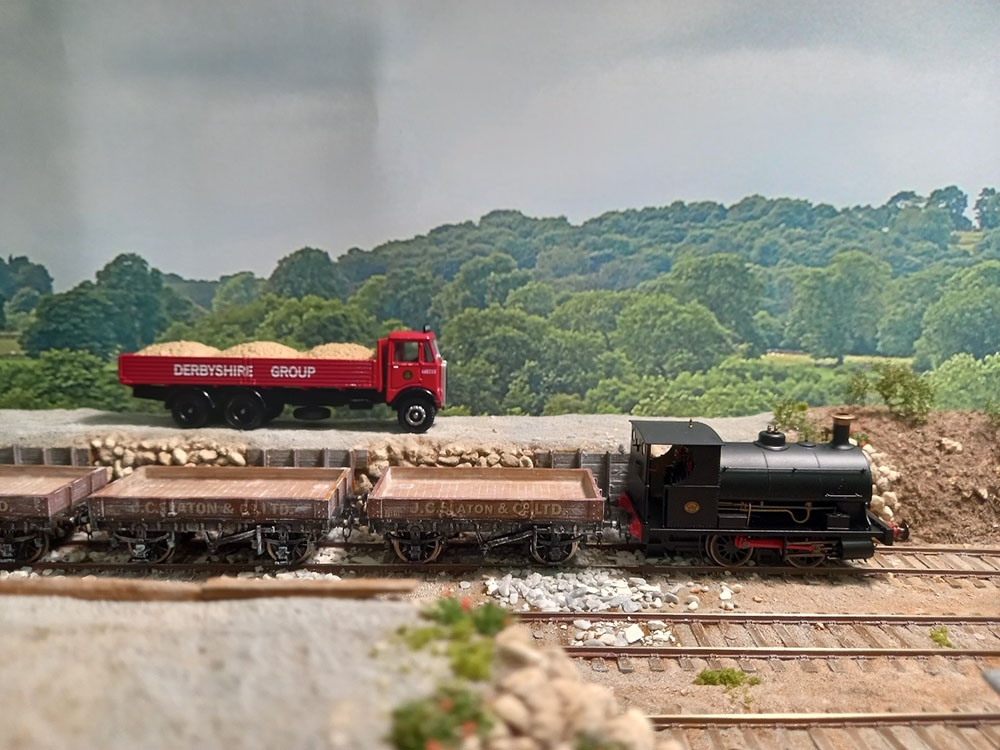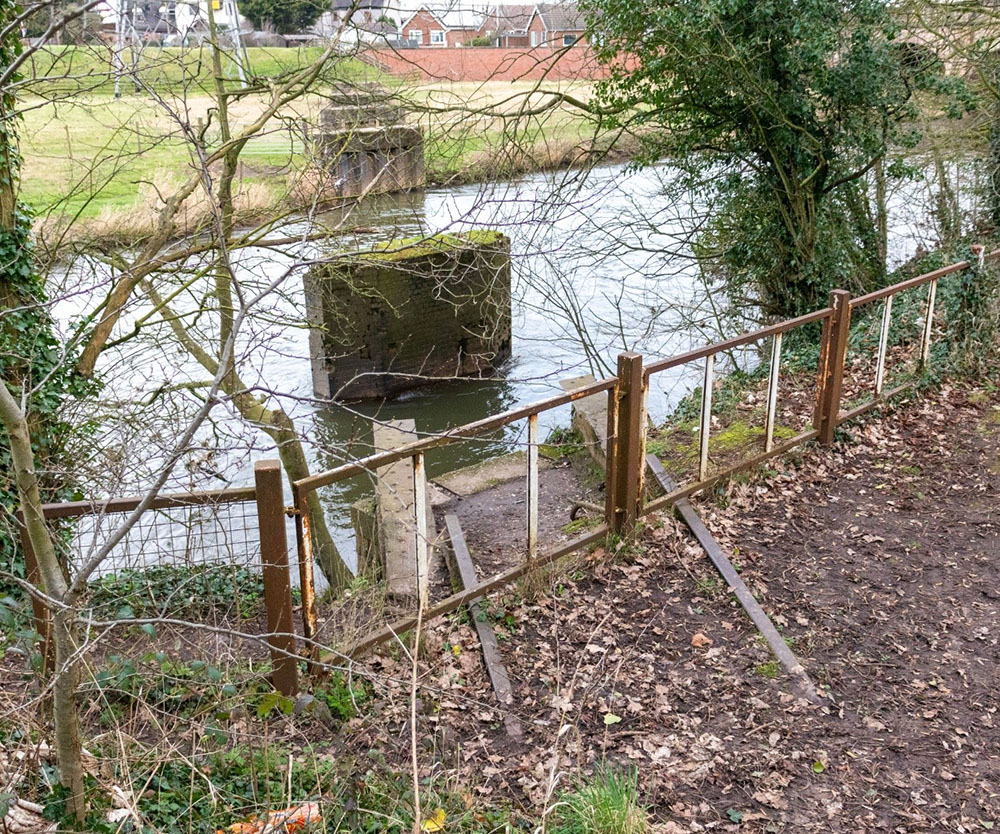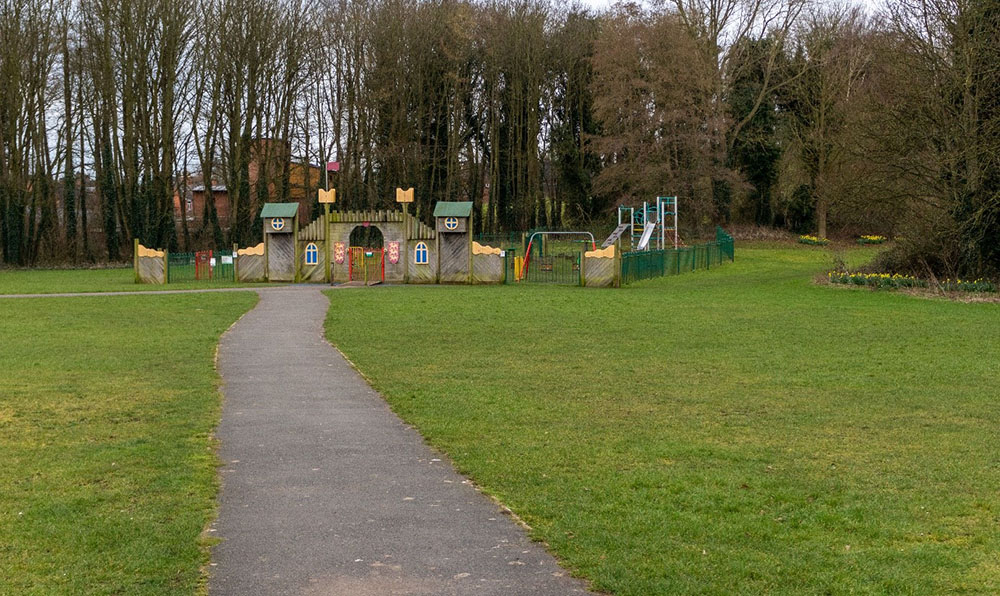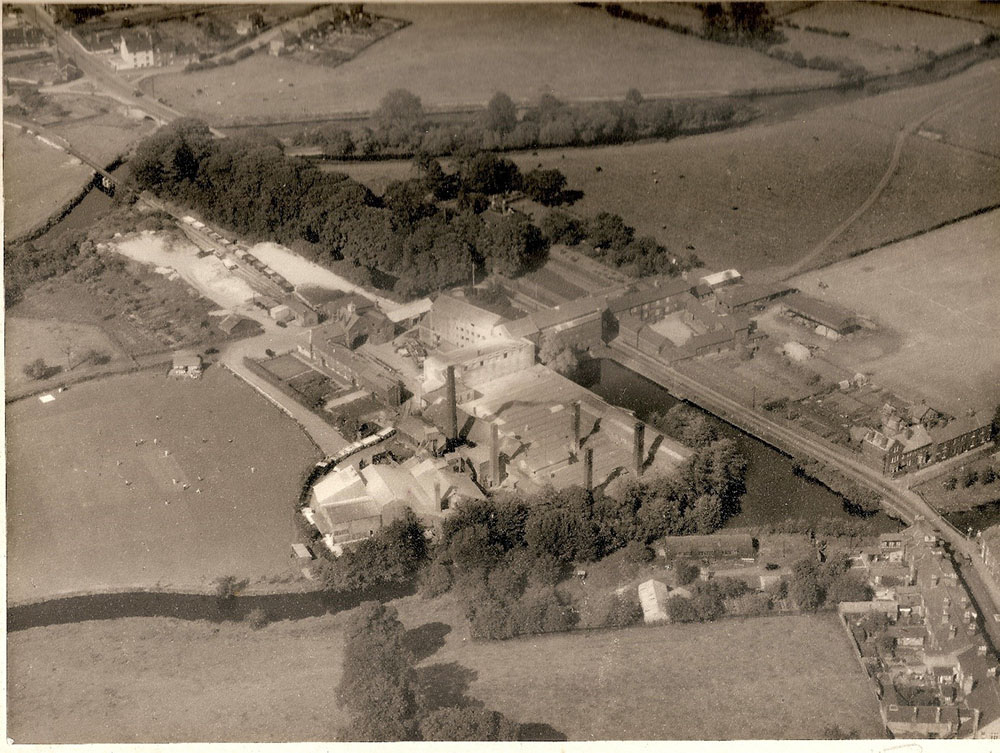A Model of Tutbury Plaster mill Railway
This article was submitted by Till Wascher, who is a trainee officer in the Luftwaffe, and is in his own words.
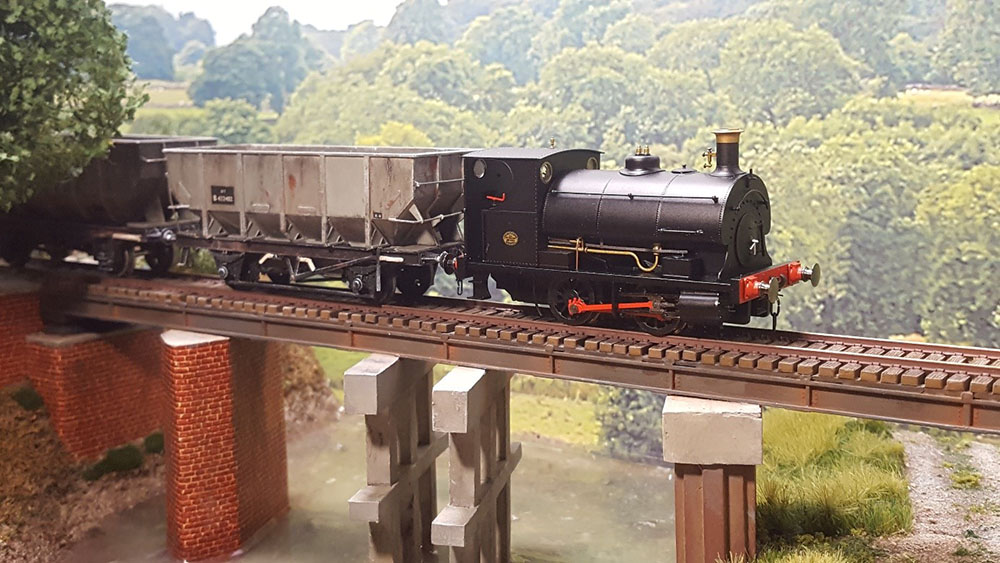
mineral wagons.
If someone would walk into Tutbury crossing the River Dove on Bridge Street back in let`s say the early 1960s, he or she would have been likely to see what is visible in the picture above: A train crossing the River Dove just next to the road bridge. Standing on that spot today, someone would only find the remaining bridge pillars left from what used to be a small industrial railway. The tracks then went on over the river in line with Bridge Street. They ended in the spot where now the car park is. There used be two loading ramps. The old mill buildings used to be where now the children`s playground is.
This industrial railway served the old cotton mill, converted by J. C. Staton in 1890 to manufacture plaster and alabaster. The gypsum was mined at Fauld Mines and graded into a higher grade for plaster and a finer grade for cement. The gypsum for Tutbury was loaded onto Staton`s own wagons at Scropton sidings until the 1950`s. The wagons were then transferred via the mainline to the exchange sidings at Tutbury station where the Staton locomotives took over the wagons. Later the gypsum arrived by lorry from British Road Services in Tutbury and was loaded directly in front of the mill buildings on the railway wagons. The lorries had loaded gypsum for the mill itself or gypsum that failed a closer inspection, consisting of stone, gravel and dust. In that case the gypsum was also loaded on railway wagons at Tutbury Plaster Mill and travelled by rail to a concrete work at Chellaston. At the were two loading ramps. One smaller one at the side of to the cricket club for good quality gypsum and a slightly bigger one on the opposite side next to the Mill Fleam and Bridge Street for poor quality gypsum.
The „good“ gypsum was then brought by rail into the buildings. The minerals were crushed and then cooked in kettles in order to drive off the correct amount of water for manufacturing plaster. Much of the machinery was belt driven.
The railway had a length of approximately 800m. In the early days steam engines by Manning Wardle were used, later the motive power was provided by two Peckett engines, very similar to the ones on the photos. Later in the 1960`s British Rail did not allow them to go onto their tracks in Tutbury Station, where the exchange sidings were. So a third company was applied with the exchange traffic between the mill and the station using a small diesel shunter.
When the plaster had the correct consistency and had time to cool down it was bagged. The bags were then loaded onto wagons for transporting it to the customer. Or by lorry in later times, I can imagine.
The mill closed in 1968 and was demolished in 1972.
So why my interest in Tutbury Plaster Mill? My interest for railways began in my early childhood days. As I live in Germany it was German railways, of course. My father used to take me to the tracks and we watched the trains go by. He is a railway modeller himself and I got interested in model trains too. I became a fan of the „Thomas the Tank Engine“ TV series, which were also broadcast in Germany. One of first model train sets was a character from the TV series and from that point on my interest in British railways developed more and more. This resulted in a special interest for industrial railways in Britain. This is why I have so much interest for the Tutbury Plaster Mill and the railway used in that place.
The idea for building a model came to my mind when Covid appeared in its first wave in spring 2020 in Germany. Like many people I had more time than usual on my hands. I happened to scroll through a book about modelling branch lines. My interest was caught by a photo that showed a small steam locomotive I own as a model. The locomotive was pictured on the bridge crossing the River Dove. But there was not only that photo but there was a sketch of the track plan of this small railway. Since the plan shows only very few tracks I figured out that it would fit into my shelf and would make a good prototype for a model railway layout. There is not that much prototype information in the book article so I started searching the web for more information. During this period I had all kinds of plans in my mind which way the finished model should look like. At that time I thought it would be okay if it is roughly orientated on the real thing.
I was not able to find material that satisfied me since I have a great interest for history. My only source of information was that book about modelling branch lines with the article mentioned above. There was only the apparent features of the mill described that one could see when he was standing at the place. But I had no idea what happened inside the mill buildings or how railway operations would have looked like.
The name of the photographer was printed underneath the photos so I tried to find some contact details online. I managed to find the email address of Clive Baker, a local railway enthusiast who made the mentioned photos. He provided me with more photos he made and an article he had written for a railway magazine. I had quite a good idea now how the outer area of the mill looked like and some information about the traffic between the exchange sidings and the area in front of the mill. That was a first success. But I still had no idea why there were two loading ramps for example or what was happening inside the mill. As well mining the gypsum locally.
At this point I decided to get in touch with Tutbury Museum. Local heritage seems to be an important topic in England and so I hoped that there would be a local museum somewhere in the area that would cover the history of the mill. So I found Tutbury Museum and asked them if they might have some information. And they had! The same evening I wrote an email to them. They replied that they were indeed able to help me! By the time I contacted the museum I had become so interested in the topic that I decided to recreate a realistic model of the plaster mill as it used to be.
In the following time I was explaining my goals to them and they assisted with their local knowledge and of course the archive of the museum. They are very kindly assisting as best they can. When I built the part with the bridge over the River Dove Tim from Tutbury Museum sent me pictures of the remaining bridge pillars which were perfect template. The bridge is of a very unique style and so I had to make most of it from scratch. The left most pillar (on the Tutbury sided river bank) and the girder for the rails are from a kit, the other brick pillar is made from a polystyrene block, the concrete ones are old Hornby pillars covered with plastic sheets and the other two (on the Hatton river bank) originate from a quay wall kit and a plastic strip. This is just one example of how I converted different kits used other materials throughout the layout. The only parts finished to this date when I am typing this lines are the bridge model and the first half of the area in front of the mill where the loading ramps were. Work on the buildings is currently in progress with the engine shed being fully under construction and a 1:1 plan of the front side of the gate house ready drawn. After a relatively long time of experimenting with different materials for building the houses and some times of starting all over again with the buildings I now use polystyrene for the houses.
The Curator of the museum, Robert, had some plans and prototype information researched for me as well.
I never expected that there would one day be a newspaper article about this project. The Tutbury Village News had written two articles about the project.
I would like to end this article with a big thank you to Tim and Robert and the rest of the team from the Tutbury Museum who provide me with so much information about the real mill.
